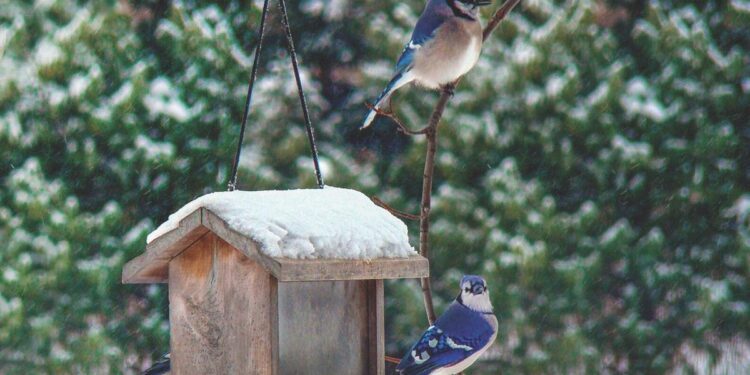When the temperatures turn cold and you get a little ice or snow, it is important to think of some of the smaller creatures that share our world and the struggles that they faced with to find food on a daily basis. One sure way to lend a helping hand to the many species of songbirds that choose to stay here for the winter is to put out a bird feeder or two.
Feeding birds is lots of fun and has gotten very, very popular. In fact, a recent survey by the Nature Conservancy showed that more than 40 of American households feed birds or other wildlife. That is more than play golf, hunt or fish combined. There is something soothing about feeding birds, something relaxing. With all the hustle and bustle of this season, we could all use a little relaxation.
The National Wildlife Federation offers these tips to get the most out of your bird feeding:
· Provide multiple feeding stations in different areas of your yard to disperse bird activity. Feed in moderation, with only a few feeders per acre.
· Clean your feeders regularly with hot water, and let them air dry completely. Also keep areas under and around the feeders clean.
· Keep seed clean and dry, and watch for mold.
· Use a seed blend designed for your feeder and the types of birds you feed. Blends that contain filler seeds and grains (milo, sorghum, and red or golden millet) are not typically eaten by birds, and will often end up on the ground.
· If you find a dead bird near the feeder that has not been killed by a predator, disinfect the feeders with a solution of one part bleach to nine parts water.
· Place bird feeders in locations that do not provide hiding places for cats and other predators. Place feeders ten to twelve feet from low shrubs or brush piles.
· Many bird species will not eat from a feeder. Some species eat only fruits or insects. Provide for these species also by planting native plants and not using pesticides in your yard or garden.
· Black oil sunflower seed is a favorite of just about every seed-eating species.
· Suet feeders are a favorite of woodpeckers and other insect-eating birds. You can make your own suet or buy blocks of suet from a wild bird store. Typically suet blocks are placed in a wire cage that hangs on the side of a tree. Do not put suet out in warm weather or it will go rancid.
Gift Ideas – since it is the Holiday Season, bird feeders, or field guides (to identify birds) make great gifts and stocking stuffers. Two of my favorite field guides are Golden Press – Guide to Field Identification of Birds of North America, and Kaufman Focus Guides Birds of North America. Both of these are simple references to birds that may show up to a feeder. They feature color and good descriptions of the birds, as well as habits and other interesting things.
Another offering from Cornell Lab is the “Backyard Birdsong Guide with Sound” featuring an illustrated field guide of 75 North American birds, and it will play the call each one makes. The book costs $35 and both of these can be purchased from their website www.birds.cornell.edu. This is also a great source for information for birders, it has great resources and online training.
A small set of field glasses (binoculars) is a good gift as well. I have found that with binoculars, the more you spend, the more you get in the way of clarity and light. To get a good set of glasses that will focus sharply and magnify 8x or 10x be willing to spend a little over $100.
Want to reach a local audience and grow your business?
Our website is the perfect platform to connect with engaged readers in your local area.
Whether you're looking for banner ads, sponsored content, or custom promotions, we can tailor a package to meet your needs.
Contact us today to learn more about advertising opportunities!
CONTACT US NOW






